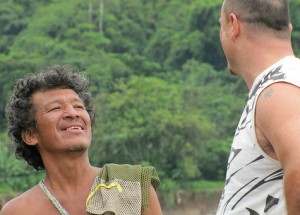Many hopeful Costa Rica expats are interested in knowing what the Costa Rican culture here is like. As with all Latin American countries, Costa Rica is rich in culture and tradition. Of course, the concept of “culture” cuts across all aspects of life.
Based on my observations after living here for some time, here are ten aspects of the Costa Rican culture that you might want to know about.
Note that I have written about many of these cultural aspects in previous blog posts and have included links, where such exist…
1. Ticos are a very peaceful people, except when driving automobiles (or motos, i.e., motorcycles). They are decidedly non-confrontational. Therefore, even if they don’t agree with you, there may be signals that they do. This can, at times, be a bit confusing for expats.
2. As far as Costa Rican food is concerned, the signature “dish” of Costa Rica is gallo pinto, which is a rice and beans mix that is served at breakfast. Also, the “típico” (or traditional) meal served at lunch is called a “casado” and is a “marriage” (hence the name casado, which means married in Spanish) of rice, beans, a meat of choice, platano maduro (or, ripe plantain), salad and potato or yuca, sometimes also served with a fried egg on top.
3. Ticos are very laid-back when it comes to time issues and punctuality. Hence the often heard phrase, “tico-time,” usually used by gringos to refer to the fact that ticos are routinely late.
4. Like all Latin countries, ticos have their own idiosyncratic and colloquial expressions. The two most noticeable are the use of the phrase “pura vida” and the repeated use of the word “mae” in informal conversations. Pura vida literally means “pure life” and is used most often in greetings…such as in the exchange…”como esta?”…response: “pura vida.” Mae is a slang expression, and is used to represent what in English would commonly be replaced with “man” or “dude,” as in “how’s it going, dude?”…”como esta, mae?”
5. Costa Ricans love their music and dance. The most típico (again, traditional) style of dance is the “swing-criollo” style of cumbia that ticos dance in a way that is very unique to their culture. If you ever get a chance to watch a couple who really know their stuff, it can be quite an amazing sight.
6. Ticos are very family-oriented. The country is small, so you are never too far away from extended family members. Family get-togethers are a frequent happening, especially on the weekends. Holidays are always family-centered events.
7. Tico men are not shy at all about expressing the fact that they believe a woman to be attractive. So if you happen to be the object of admiring glances, or “piropos” (flirtatious remarks), it is better to be flattered than offended.
8. A man can be fooled into believing that due to the sensuality and sexiness of the ticas (Costa Rican women) that their attitudes about sex in general are liberal. That can get you into trouble. The normal Costa Rican lady (note, that I am not talking about the ones found in the “Hotel Del Rey”) is quite conservative, even though not shy about dressing and carrying herself in a way that men find irresistible.
9. Ticos are extremely patient people for the most part. I believe they have had to learn that from enduring endless lines at banks and government run monopolies like ICE (the telephone company). They are also known to administer “lessons in patience” when confronted with examples of gringo impatience.
10. Tico culture is for the most part extremely polite and cordial. It pays to learn to hold one’s temper and learn to say please and thank you. A good example of tico politeness is their non-use of the informal form of the personal pronoun you, which in Spanish is “tú,” opting rather to use the more formal “usted.”
I could go on, but I believe the above list represents common aspects of the Costa Rican culture that can help you adapt and have a better experience as an expat in Costa Rica.
Pura Vida!



Leave a Reply